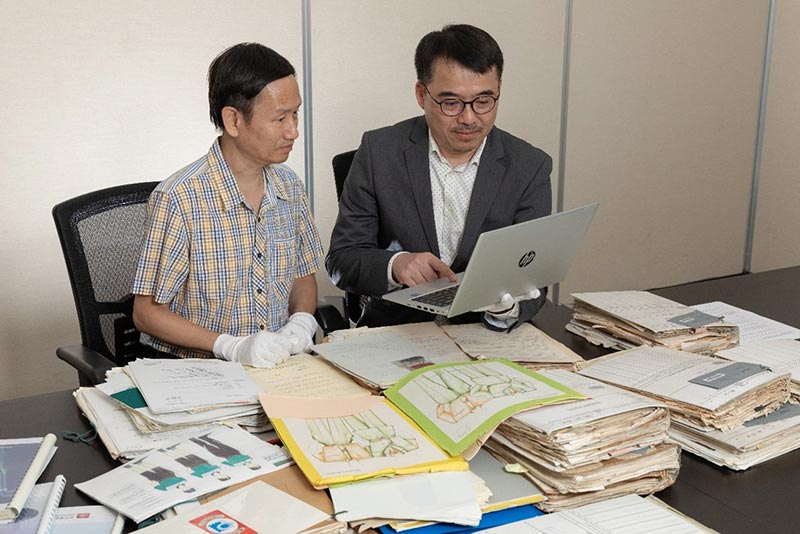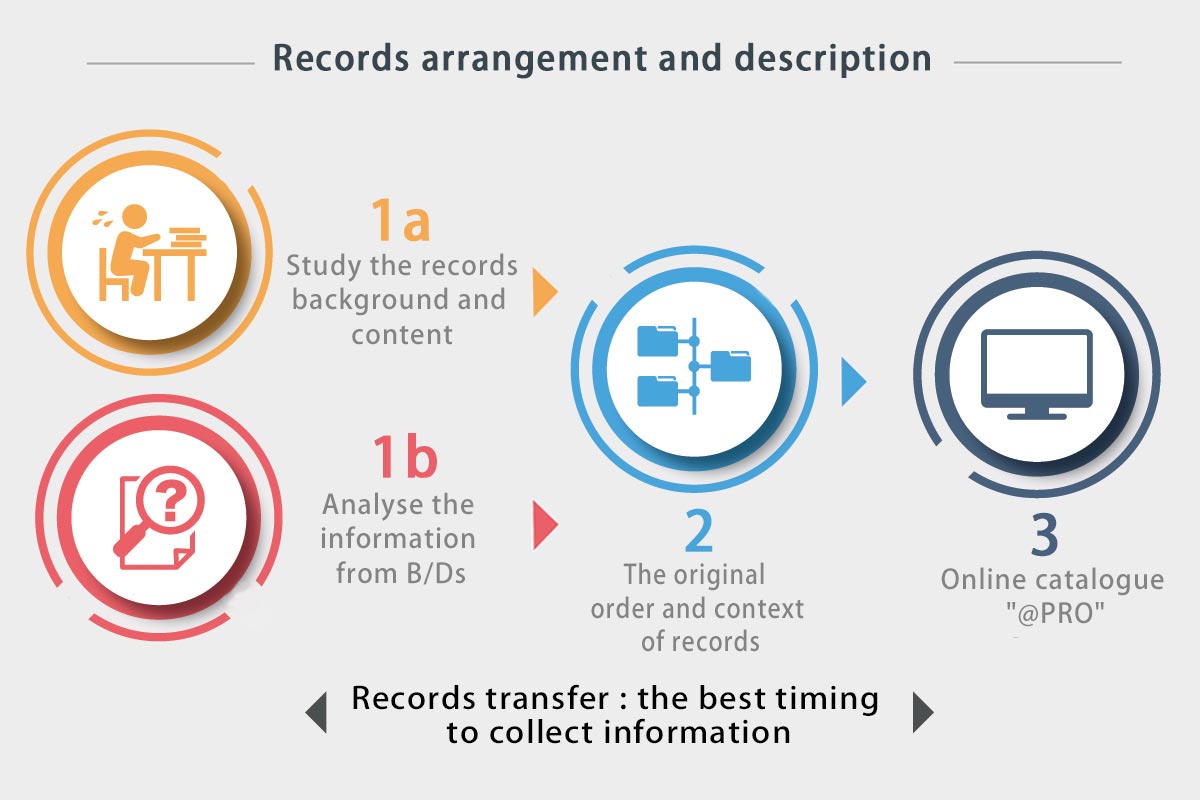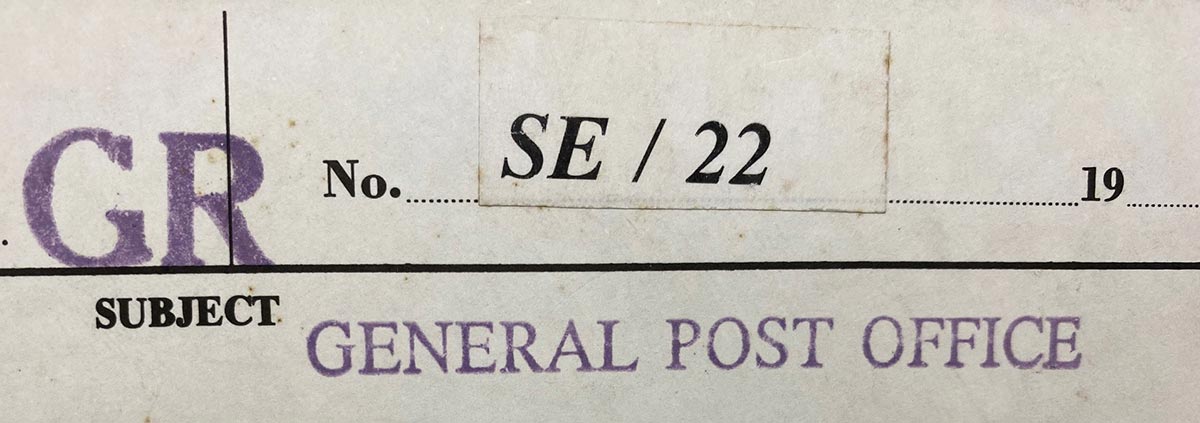Discovery
Discovery / Treasures
“Records appraisal requires multi-disciplinary knowledge, theories, and experiences instead of rigidly applying any principle or doctrine.”
Records appraisal is an important process of selecting records with archival value for permanent retention. How exactly does an archivist appraise the records? Let two experienced Senior Assistant Archivists, Mr Manson Kwan Hon-ho and Mr Jack Lau Chik, tell you all about it.
Decluttering
Mr Kwan, who has been in the profession for more than 20 years, considers records appraisal an essential part of records management. But many people do not quite get the word “appraisal”. “Let’s put it this way, records appraisal is like household decluttering to discard the non-essentials and keep only those useful or valuable. Archivists select records with historical value from the massive government records for permanent retention.” The decision to “preserve” or “destroy” is never arbitrary, Mr Kwan stressed. Good records appraisal requires the following from the archivist:
- A good knowledge of archival science and history, as well as the fundamentals of records appraisal, to analyse and understand the development and significance of the events documented in the records; and
- Familiarity with the structures and functions of government departments which change with operational needs, and communication with the records creating departments to accurately grasp the relevance of the records to the departments.
To make a right decision, records appraisal requires multi-disciplinary knowledge, theories, and experiences instead of rigidly applying any principle or doctrine.

The Older the More Valuable?
Many people perceive archives as antiques, assuming that the older they are, the more valuable they are. This is not always the case. Mr Kwan has an experience to share. “One time, a department requested us to appraise its records created in the 1940s and 1950s. Its staff recommended the records for GRS’ permanent retention because they were aged. After appraisal, however, I found the contents relatively trivial, some of which were accessible elsewhere and thus appraised that records as having insufficient archival value for permanent retention.”
On the other hand, “younger” records also stand a chance of becoming archives. Citing the records created by the New Airport Projects Coordination Office in the 1990s as an example, Mr Kwan said that the photos contained therein fully document the process from conception to completion of infrastructure projects such as Chek Lap Kok Airport, Tsing Ma Bridge, Tung Chung New Town and Western Harbour Crossing. The public may be unimpressed by these infrastructural facilities which seem ordinary in the daily life. However, the archivist took on a time travel to investigate the background and progress of the Airport Core Programme to uncover the interrelation and interaction among various projects. The records were thus selected for permanent retention to enrich the collective memory of the Hong Kong community.

The almost-completed Chek Lap Kok Airport
Tracing the Historical Context of Records
After selecting records for permanent retention, archivists will describe the records according to the General International Standard Archival Description [ISAD(G)] and provide such information in the online catalogue to facilitate public search. This process is called archival description, in which archivists have to study relevant documents for the detailed functions and organisational history of the transferring department in order to conduct the work properly and enable users to grasp the record’s contents accurately.

With today’s advanced technology, users can easily find loads of information through search engines. So why do archivists still have to dig out the historical context of the records? Mr Lau believes that even though technology facilitates the search process, human involvement remains indispensable. One of his experiences speak for itself. One time, he acquired numerous ship plans from a government department. These ship plans were untitled, and their background information was as scanty as hindering public search. After flipping through these ship plans, the archivists decided to use the ship names and models as titles, so that the online catalogue could identify the information and content of each record for users’ easy searching.
Archivist: A Riddle-solver and a Guide
Mr Lau admits that challenges come up from time to time in tracing the historical context of the records for arrangement and description. When ambiguous abbreviations are used on the file covers, for example, archivists need to “solve the riddle” by tracing the history of the records creating department, and studying the content and relevant information thoroughly to get the meaning of such abbreviations.
Do you know the meaning of the abbreviation “SE” on the file cover of this record transferred from the Post Office?

Answer: Staff Relations/Employee Care & General Section
(Record ID: HKRS1398-1-1)
A record taken out of context is like a loose page fallen from a book. It does not make any sense even if the users get hold of it. This is why archivists have to sort out the historical background of records as a reference to facilitate users’ interpretation. In other words, an archivist is also a “guide” who scouts for the users in advance so that they can use and make the most of the records easily. This mission makes Mr Lau proud.
Challenges from Electronic Records
The proliferation of electronic records and their increasingly varying formats have brought enormous challenges to archivists in managing and preserving records. Both Mr Lau and Mr Kwan see the need to keep pace with the times by receiving relevant training, and collaborating with professionals in information technology and other fields so as to rise to the challenges arising from electronic records together. If you are interested in electronic records management, you may wish to read the feature article “ERKS / Continuity”.